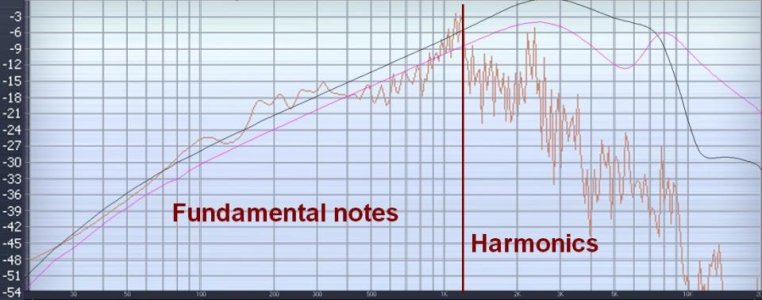Thanks, freefrog. As usual, you share a wealth of information.
Given the stray capacitance issue on 4-wire humbuckers, I guess it would make sense to cut the leads as short as possible.
I had been leaving them long, in case of future swapping or sale.
You"re welcome.
My merit is relative: without saying it (and maybe without conscientizing it), a famous US winder has actually based one of its well-known tricks on the use of assymetrical capacitive values. ;-)
And I wouldn't be able to share this kind of info if I hadn't helped a winder to correct one of his designs plagued by unrequested parasitic capacitance. So I thank him as you thank me.

That said: when it comes to humbuckers coils wound with a same wire gauge, the problem is that
stray capacitance is narrowly dependant on the physical reality of each pickup and wiring.
In many cases, one coil compensates the other and the overall frequency response appears as flat, with minor deviations. That's why some people won't never notice any issue with 4 conductors wiring.
Furthermore, even the presence of covers, wax potting, shielding foils and so on can change the overall capacitive load AND "capacitive balance" between coils.
Reason why, to obtain the same correction on two pickups of a same model, it can be necessary to use capacitors of different values... A bit like with the resistors used to "tune" Duncan stacks.
Shortening 4 conductors cables can certainly help by shifting up the "cross frequency" between coils but it doesn't prevent the potential issue created by stray capacitance, for two reasons and/or in two situations:
1)when wound with more turns of thinner wire, high DCR pickups have inherently more capacitive coils. It shifts down their main resonant peak AND the "crossover frequency" that most normal humbuckers keep out of perception. It's not always "correctible" by cutting shorter the 4 cond. cable;
2) what makes stray capacitance annoying or not because of secondary peaks in the audio range is the capacitive
proportion between coils: a difference of 10pF only can solve the problem or make it worse (!).
BTW and FWIW, that's what I tried to share there:
https://music-electronics-forum.com...ransducers-a-few-thoughts?p=964626#post964626
That's why I've recommended to try capacitors from 10pF to 220pF with the smallest increments possible between capacitive values.
That's also why I've not claimed it's a miraculous solution. Ideally, one would need to measure the resonant peak of a pickup by exciting it electrically to check if a capacitive correction is efficient or not...

